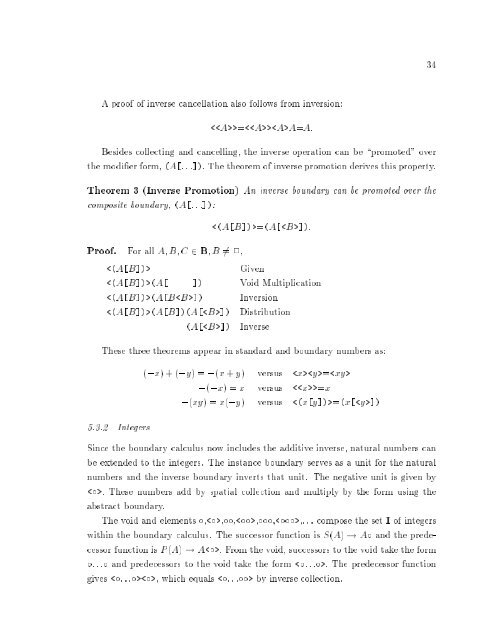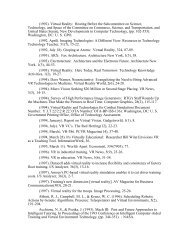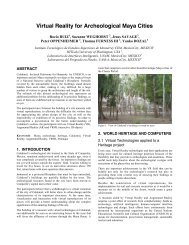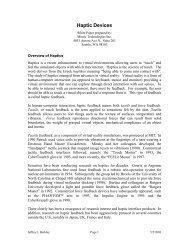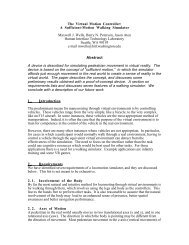A Calculus of Number Based on Spatial Forms - University of ...
A Calculus of Number Based on Spatial Forms - University of ...
A Calculus of Number Based on Spatial Forms - University of ...
Create successful ePaper yourself
Turn your PDF publications into a flip-book with our unique Google optimized e-Paper software.
34<br />
A pro<str<strong>on</strong>g>of</str<strong>on</strong>g> <str<strong>on</strong>g>of</str<strong>on</strong>g> inverse cancellati<strong>on</strong> also follows from inversi<strong>on</strong>:<br />
=A=A:<br />
Besides collecting and cancelling, the inverse operati<strong>on</strong> can be \promoted" over<br />
the modier form, (A[:::]):The theorem <str<strong>on</strong>g>of</str<strong>on</strong>g> inverse promoti<strong>on</strong> derives this property.<br />
Theorem 3 (Inverse Promoti<strong>on</strong>) An inverse boundary can be promoted over the<br />
composite boundary, (A[:::]):<br />
=(A[]):<br />
Pro<str<strong>on</strong>g>of</str<strong>on</strong>g>. For all A; B; C 2 B;B 6= 2;<br />
<br />
Given<br />
(A[ ]) Void Multiplicati<strong>on</strong><br />
(A[B]) Inversi<strong>on</strong><br />
(A[B])(A[]) Distributi<strong>on</strong><br />
(A[]) Inverse<br />
These three theorems appear in standard and boundary numbers as:<br />
(,x)+(,y)=,(x+y) versus =<br />
,(,x) =x versus =x<br />
,(xy) =x(,y) versus =(x[])<br />
5.3.2 Integers<br />
Since the boundary calculus now includes the additive inverse, natural numbers can<br />
be extended to the integers. The instance boundary serves as a unit for the natural<br />
numbers and the inverse boundary inverts that unit. The negative unit is given by<br />
: These numbers add by spatial collecti<strong>on</strong> and multiply by the form using the<br />
abstract boundary.<br />
The void and elements ;;;;;;::: compose the set I <str<strong>on</strong>g>of</str<strong>on</strong>g> integers<br />
within the boundary calculus. The successor functi<strong>on</strong> is S(A) ! A and the predecessor<br />
functi<strong>on</strong> is P (A) ! A: From the void, successors to the void take the form<br />
::: and predecessors to the void take the form : The predecessor functi<strong>on</strong><br />
gives ; which equals byinverse collecti<strong>on</strong>.


